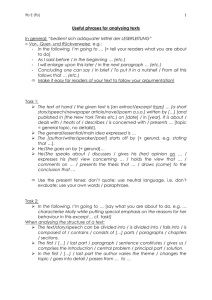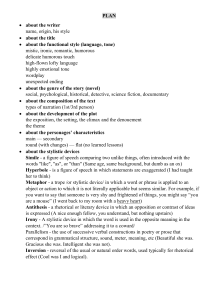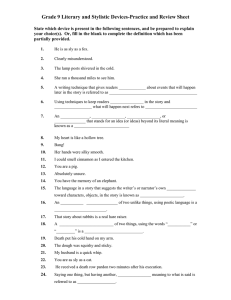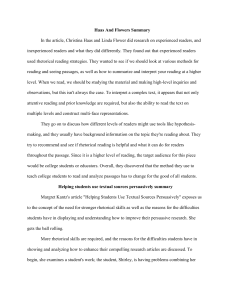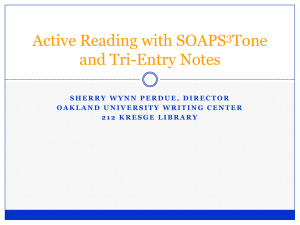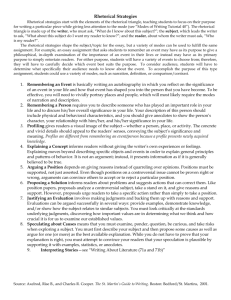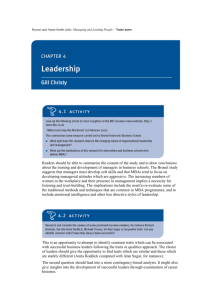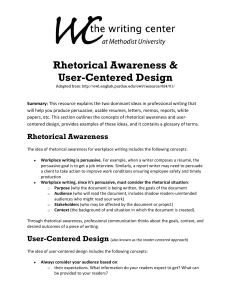useful-phrases-for-analysing-texts
advertisement
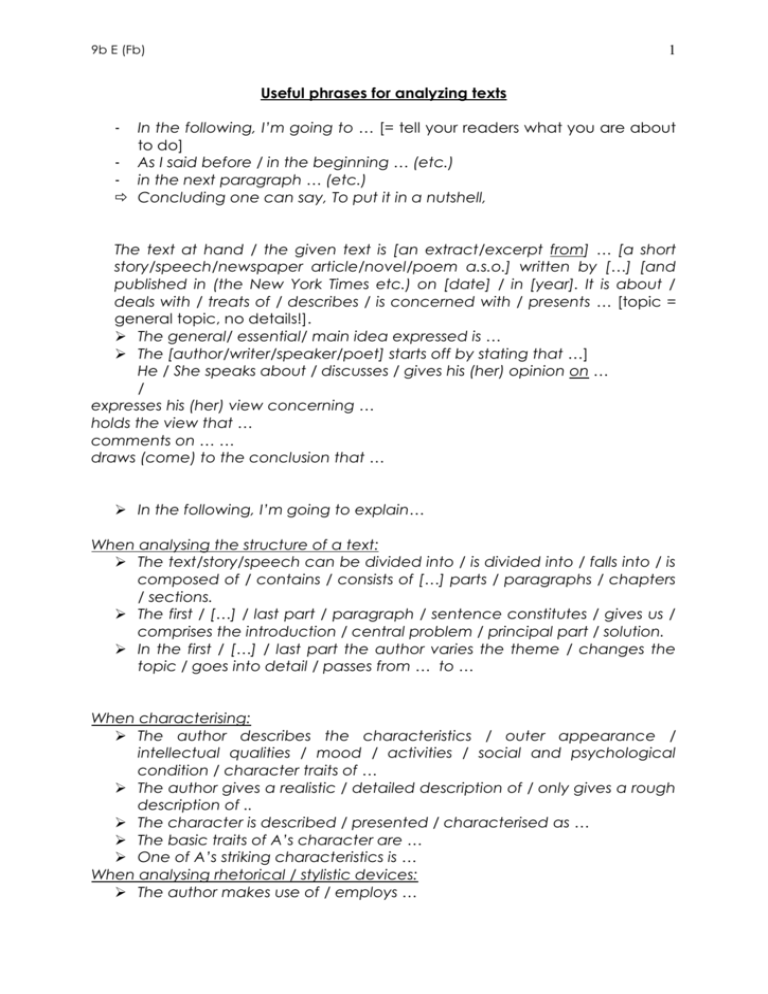
9b E (Fb) 1 Useful phrases for analyzing texts In the following, I’m going to … [= tell your readers what you are about to do] - As I said before / in the beginning … (etc.) - in the next paragraph … (etc.) Concluding one can say, To put it in a nutshell, - The text at hand / the given text is [an extract/excerpt from] … [a short story/speech/newspaper article/novel/poem a.s.o.] written by […] [and published in (the New York Times etc.) on [date] / in [year]. It is about / deals with / treats of / describes / is concerned with / presents … [topic = general topic, no details!]. The general/ essential/ main idea expressed is … The [author/writer/speaker/poet] starts off by stating that …] He / She speaks about / discusses / gives his (her) opinion on … / expresses his (her) view concerning … holds the view that … comments on … … draws (come) to the conclusion that … In the following, I’m going to explain… When analysing the structure of a text: The text/story/speech can be divided into / is divided into / falls into / is composed of / contains / consists of […] parts / paragraphs / chapters / sections. The first / […] / last part / paragraph / sentence constitutes / gives us / comprises the introduction / central problem / principal part / solution. In the first / […] / last part the author varies the theme / changes the topic / goes into detail / passes from … to … When characterising: The author describes the characteristics / outer appearance / intellectual qualities / mood / activities / social and psychological condition / character traits of … The author gives a realistic / detailed description of / only gives a rough description of .. The character is described / presented / characterised as … The basic traits of A’s character are … One of A’s striking characteristics is … When analysing rhetorical / stylistic devices: The author makes use of / employs … 9b E (Fb) 2 This is done in order to stress / put emphasis on / emphasise / draw attention to / highlight … The author wants to involve the readers/listeners by [+ gerund] / convince them of … He/She wants to appeal to (e.g. the readers’ conscience) … He/She wants to imply / implies that … He/She wants to arouse interest / simplify / illustrate … He/She refers to an example He7She makes use of / employs / uses formal / informal / colloquial words / expression / language. This word / phrase / expression refers to / underlines / emphasises / means / stands for … When referring to the text: As it is written in l./ll.: … As one can read in l./ll. This is indicated by l./ll. where it is said that … This can be proven with l./ll. L./ll. (…) suggest(s) that … as it is said that … … Don’t forget to sum up your main results. Use the present tense in your analysis only; use your own words; always PROVE what you’re claiming by REFERRING to the respective lines. Don’t just list rhetorical or stylistic devices, but always explain their function and their effect on the reader/listener. Try not to repeat what you’ve already written in task 1. ANALYSE doesn’t mean SUMMARISE, i.e. read between the lines. Task 3: Task 3 can either be an EVALUATION (i.e. pro- and counter-arguments + own opinion) or a RE-CREATION OF TEXT (e.g. a diary entry). You usually DON’T quote in task 3, but for a re-creation of text task it might be necessary to refer to the text again (e.g. in case you’re asked to refute an argument etc.)
